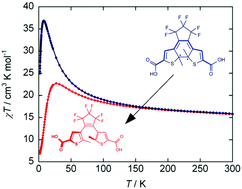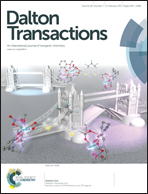Remote control of SMM behaviour via DTE ligands
Abstract
Chemists and physicists are continuously working to understand the mechanisms controlling molecular magnetism, especially single-molecule magnetism, to improve the magnetic properties, such as the blocking temperature. With the current research focused on preparing molecular devices, methods to control the components of the devices are necessary. Extensive research has shown that stimuli, such as light, electric current, etc., can be used to change the properties of the molecules making up the devices. Bis(carboxylato)dithienylethene (DTE) derivatives can be photo-isomerized between open and closed forms, i.e., unconjugated and π-conjugated forms, and because of the carboxylate groups, it can be used to link 3d and/or 4f metal ions. Herein the use of DTE ligands to remotely control the magnetic properties of single-molecule magnets is discussed.


 Please wait while we load your content...
Please wait while we load your content...